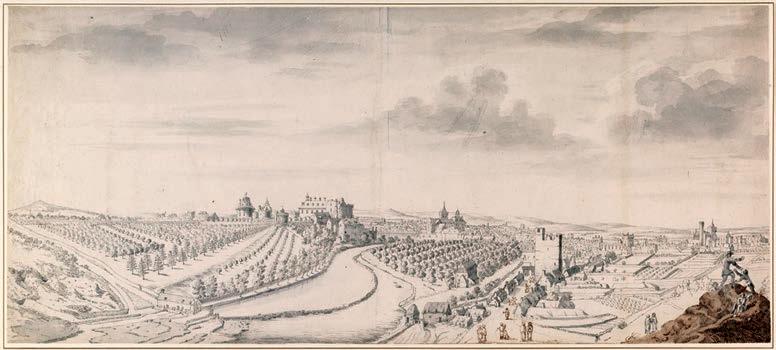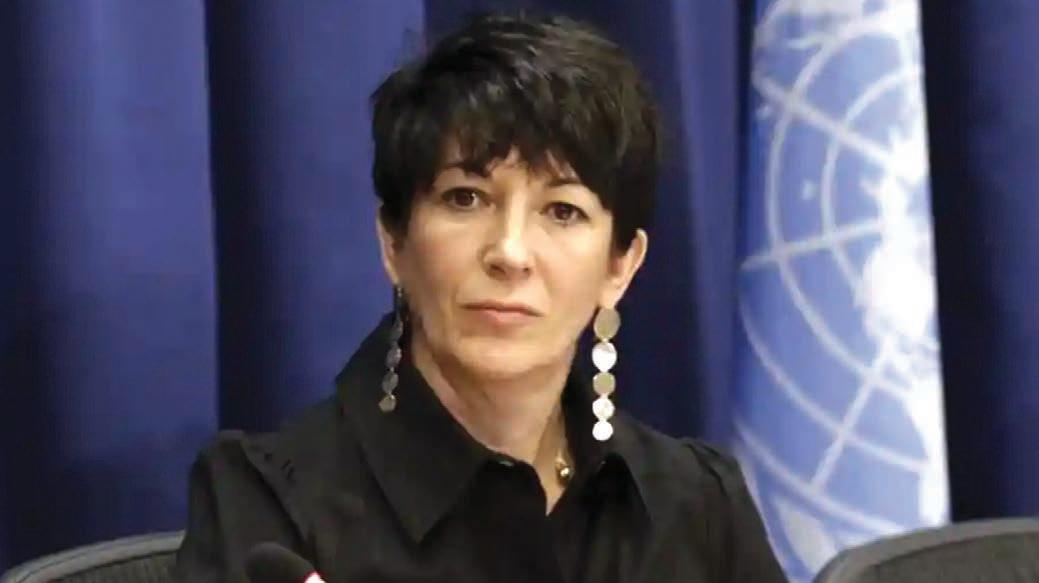
17 minute read
Marianne Heron
What Ghislaine Maxwell’s conviction shows us
AS I SEE IT
Advertisement
MARIANNE HERON
THE conviction of socialite Ghislaine Maxwell in the dying days of last year suggests that the balance in the outcomes of sex crime trials has shifted in favour of abused women and girls. And so in one sense it has. Maxwell faces up to 65 years in jail for tra cking girls for abuse by the late Je rey Epstein, her former boyfriend. e usual defence ploy of discrediting the complainants so that the victims rather than the perpetrator are to blame didn’t work for the defence on this occasion. Perhaps it didn’t pay o due to altered attitudes thanks to the #metoo campaign which has called out sexual abuse by men.
Blaming women is an approach that is as old as the hills when it comes to deciding who to believe, in rape and other sex crimes. e bias against women is spelt out in phrases like ‘she was asking for it’, ‘she is no better than she ought to be,’ ‘she is only in it for the money’.
Destroying the alleged victim’s credibility has certainly worked in the past. Remember the infamous 2011 trial of Dominique Strauss -Khan, at the time head of the International Monetary Fund who was accused of sexual assault and the attempted rape of maid Na ssutou Diallo in a New York hotel. Initially, Strauss Khan was indicted by a grand jury. Immediately a private detective, hot-shot lawyers and PR people were hired for the in uential StrausKhan. e case was dismissed barely a month later when the prosecution ‘reviewed’ their evidence due to ‘lack of credibility’ on the part of the 32-year-old migrant from Guinea. Put it another way, and the defence were ready to say that she couldn’t be believed.
Wind back to another occasion, the so-called rugby rape in Belfast three years ago. Two members of the Irish rugby team, Paddy Jackson and Stuart Olding, were accused of raping a 19-year-old girl at Jackson’s home and two other players were accused of lesser o ences. e trial last nine weeks, was sexually explicit with derogatory sexual messages by the players on social media made public, and the case divided Ireland into pro-victim and pro-player camps. In the end the jury returned a unanimous not guilty verdict. No matter what any of us may think about the case and its outcome the experience of the alleged victim during the trial would make any woman rape victim think twice about seeking justice through the courts. e young woman involved was subjected to eight days of tough cross-examination by male barristers and her underwear – a thong – was handed to the jury as evidence. To many it seemed the score was rugby players one, victim nil.
Sex tra cker Je rey Epstein hanged himself in jail in 2019, Maxwell stood alone to take the rap for the procurement that fed billionaire Epstein’s appetite, and that of some of his associates, for underage girls. Although Epstein’s sex tra cking was known about for years he had only served 13 months in a county jail for lesser o ences up until 2018. en a new investigation into his activities came about but only due to an investigative journalism series in the Miami Herald which revealed that the evidence of 50 of his victims had been set aside due to pressures from the in uential Epstein’s legal team. He was arrested a year later and took his own life rather than face conviction. No other men, none among those high iers who enjoyed not only hospitality but engaged in sex with underage girls on o er tra cked by the man who called his private plane the Lolita Express, have yet faced arrest.
Investigation into those other abusers won’t happen. e balance may have shifted in favour of female victims but not so far yet that that the rich and in uential will be prosecuted.
2022 What’s your focus?
CLAIR WHITTY
e end of the year can be a good time to re ect on the year gone by and think about any changes you would like to make for the year ahead. is could mean doing something new, or it could be something that you want to stop doing, something that you feel adds no value to your life at this point.
It might be something simple like improving your diet so that you include healthier options on a more regular basis. Maybe you want to increase how much exercise you do. It could be starting a new course that you have been thinking about, learning a new skill, playing the piano, learning a new language. It could be about modifying your behaviour and how you react to situations in your life. It’s a great time to think about your health. Maybe you’d like to improve your immune health, joint health, skin health, or perhaps you are thinking about how you could improve the overall health of your family.
For me, it’s a time to think about what health issues are most important to focus on now that I am 57 and postmenopausal. Bone health and heart health are important areas to look after at this stage. Plus, I noticed some hair loss this year which I am working on now. My cholesterol is high. It was a stressful year, that’s my excuse, plus lack of exercise, hormonal changes, stress, and maybe the odd chocolate bar, would have had an impact on the cholesterol numbers. e other area I want to improve on, is to walk more. I tell myself that being on my feet in the shop and going up the stairs is great exercise. It is helpful, but not the solution to exercise and getting out for a good fresh air walk. ese are the areas that I will focus on for 2022. e common connection to achieving these goals are: a healthy diet, exercise, stress control, and quality sleep. I will also top up on nutrients to support the process. I will let you know how it all goes throughout the year.
In the meantime, I would like to wish you all a Happy New Year, I hope that it’s a good one.
Call in to see us at Market Cross Shopping Centre, we would love to chat and help you with your new regime.
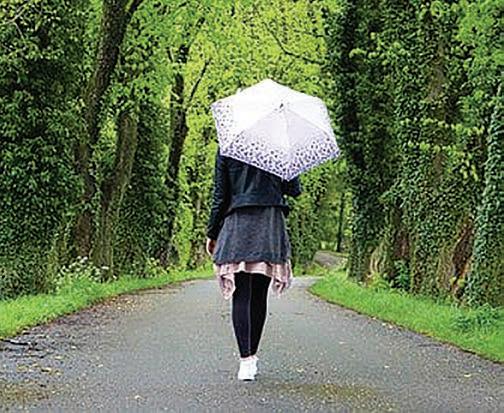
Natural Health Store Market Cross Shopping Centre Phone: 056 7764538 Email: info@ naturalhealthstore.ie Shop online www. naturalhealthstore.ie
Avoiding the pain of painkillers
ANDREW MCDONALD HYPNOTHERAPIST
SOMETIMES you hear people complaining about the “nanny state” when it comes to medication. Somebody can’t get a pill for this or that and instantly they put the blame on the medical profession and/or the government. ere are occasions when there may even be a little substance to their protests. e truth is, compared to certain other parts of the globe, the prescription drug industry and the work of physicians are heavily regulated areas. e question is however, are we actually more rather than less lucky that we live with such a system? A docudrama recently featured on Disney+, having earlier been screened on Hulu in America, suggests the answer is a resounding yes for the former of these two options.
Dopesick, which dramatised the opioid scandal in the United States, tells the story of what can happen when regulation is weak. row in a bit of corruption and the potential is there for a desperate crisis. In the nineties, Purdue Pharma, a major American pharmaceutical company developed a drug, and drove a campaign of aggressive promotion, including intimidation of healthcare professionals, which was supposed to “end pain”. rough trickery, manipulation and corruption they painted their medication, OxyContin, as essentially non-addictive. is was lies. It was ferociously addicting. So much so that it became colloquially known by the derogatory term “hillbilly heroin” as one of the areas most targetted by Purdue were the mining communities of the Appalachian region. It literally turned people into desperate addicts simply by them following their doctors’ advice. In an overwhelming number of cases, they didn’t initially abuse it, it abused them. It was even being prescribed in huge amounts for minor issues like a sore back, dental pain or headaches. e Sackler family who owned Purdue Pharma wanted to sell their drug worldwide and made a concerted e ort to get it approved in Germany. e idea was Germany, having famously tough pharmaceutical regulation, giving approval would make life easier to get the drug on the market elsewhere. e Germans steadfastly refused. ere is no reason to doubt that similarly vigorous regulatory authorities in Ireland wouldn’t have met the Sacklers with the same response.
Opioids are serious stu . Used in the right way, they have an important role to play in medicine. A weak version, codeine, is available without prescription in Ireland. Even with this much less potent opioid, pharmacists are very careful to restrict who purchases it, in what amount and will demand good reasons to sell it over a safer, nonopium based painkiller. Even with codeine, people can become addicted very quickly. In Ireland, as elsewhere, pain medication addiction is a serious issue.
All of which leads us to another question. Should we be so quick to reach for painkillers when we’re feeling sore? Certainly there are painful ailments which call for pills, whether prescribed or over-the-counter, but others we can remedy without needing to swallow a tablet. Next week, we’ll look at some of the alternatives.


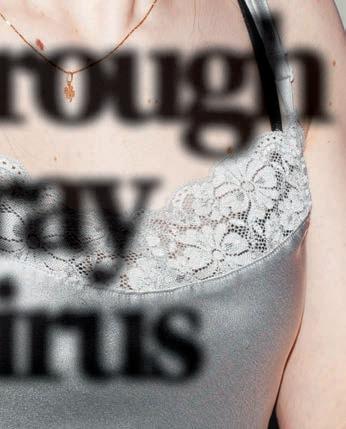


A REVOLUTIONARY spray has been tested to both prevent the Covid-19 virus infecting nasal cells in the rst place and to reduce viral transmission in those already infected.
An innovative clinical trial is set to commence in Australia testing whether a common blood thinning drug can prevent SARS-CoV-2 infection. e drug is administered by nasal spray and researchers believe it can block the virus from initially infecting cells in the nose. e nasal spray is based on a hypothesis suggesting initial SARS-CoV-2 infections take hold in the nose via a molecule called heparan sulfate. e virus’s infamous spike protein binds to heparan sulfate which enhances its ability to subsequently interact with ACE2 receptors and infect human cells.
Heparin is a widely used anticoagulant, rst discovered over a century ago and safely used as a treatment for heart attacks and blood clots. Gary Anderson, from the University of Melbourne’s Lung Health Research Centre, said early research had indicated that heparin is so molecularly similar to heparan sulfate that it can neutralise SARS-CoV-2 particles when administered directly to cells in the nose.
“Heparin – the active ingredient in our spray – has a structure that is very similar to heparan sulphate, so it behaves as a ‘decoy’ and can rapidly wrap around the virus’s spike protein like a python, preventing it from infecting you or spreading the virus to others,” explained Nr Anderson. e large clinical trial testing the nasal spray will commence soon in the Australian state of Victoria. e plan is to distribute the spray to 400 houses within 24 hours of a con rmed case in each household. e trial will be blinded and placebo controlled, with each participant directed to take two pu s of the spray three times a day.
e goal will be to investigate whether the nasal spray prevents Covid-19 in close contacts of con rmed cases. Active Covid-19 cases will also be given the spray as the researchers are also looking at whether heparin reduces the infectiousness of a con rmed case. e researchers say administering heparin as a nasal spray should not lead to broader blood thinning as it doesn’t reach the bloodstream when administered through the nose. Anderson also notes this prophylactic nasal spray should be e ective against all viral variants.
“Importantly, this nasal spray should prove e ective for all Covid-19 variants because the heparan sulphate binding site is essential for infection, and is likely to be preserved in new variants,” says Anderson. “Heparin binds avidly to the omicron variant currently sweeping throughout the world.” e trial is set to run for six months, so it won’t be known how well it works until the second half of 2022. However, if it does prove to be e ective, it could be rolled out quickly as the drug is already approved for human use, doesn’t require refrigeration, and is easily distributed in plastic vials.
e treatment is not being proposed as an alternative to vaccination. Instead, the researchers suggest it will hopefully help protect those most vulnerable to severe Covid-19 and prevent onward transmission in those experiencing vaccine-breakthrough infections.
“If the treatment is proven to work in the setting of preventing progression and spread within homes, it would support using the spray to protect highly vulnerable populations such as the elderly, pregnant women, and those with weak immune systems,” said Anderson.
“It may also prove useful to protect our front-line health care workers from illness and to preserve capacity in the health care system.”

Breakthrough nasal spray to fight virus
Source: University of Melbourne
Scientists nd antibodies to target all variants
AN international team of scientists have identi ed antibodies that neutralise omicron and other SARS-CoV-2 variants. ese antibodies target areas of the virus spike protein that remain essentially unchanged as the viruses mutate.
By identifying the targets of these ‘broadly neutralising’ antibodies on the spike protein, it might be possible to design vaccines and antibody treatments that will be e ective against not only the omicron variant but other variants that may emerge in the future, said David Veesler, investigator with the Howard Hughes Medical Institute and associate professor of biotion,” Prof. Veesler said.
Prof. Veesler led the research project with Davide Corti of Humabs Biomed SA, Vir Biotechnology, in Switzerland. e study’s ndings were published in December in the journal Nature. e omicron variant has 37 mutations in the spike protein, which it uses to latch onto and invade cells. is is an unusually high number of mutations. It is thought that these changes explain in part why the variant has been able to spread so rapidly, to infect people who have been vaccinated and to reinfect those who have previously been infected.

Garda hit big time by Covid
COVID-19 is having a “signi cant” impact on sta ng levels among Gardaí, according to the Vice-President of the Garda Representative Association Brendan O’Connor.
Mr O’Connor, who is a garda in Co Donegal, told RTÉ’s Morning Ireland that “units are stripped down”.
Gardaí are travelling further distances to respond to callouts and some gardaí have been asked to come into work on their rest days.
Garda O’Connor said there are signi cant numbers of gardaí out of work due to the pandemic “and that is having an impact on our members”.
He said: “We are back to the old scenario of fewer people expected to do more, so it’s an added burden on our members.”
He also said there has been no con rmation that gardaí who are deemed to be close contacts will be asked to come to work, but it is something that has been discussed.
Members are “very concerned” about this, he added.
Meanwhile, Iarnród Éireann has said that a number of services have been cancelled due to sta shortages related to Covid-19 and close contact rules.
Details of the services a ected are available on irishrail.ie e Chief Executive of Ibec has said that 15% to 18% of sta are absent due to Covid in those businesses that are open.
Danny McCoy said this rate was also “likely to be building” upwards given the scale of the case numbers and the 10-day isolation period [for those not yet boosted].
He said that critical supply chains, such as food, were impacted in particular.
Derogations will be important in certain industries where workers must attend in person, he said.
“ ere’s a lot of people who are actually healthy, can work, but are getting caught up in the close contact rules,” Mr McCoy said. e Irish Congress of Trade Unions said any amendment to isolation restrictions for close contacts “must be guided rst and foremost by public health advice”.
ICTU General Secretary Patricia King said: “Congress is acutely aware of the surging numbers of Covid-19 infections and the knock-on e ect of requiring tens of thousands of workers to self-isolate as close contacts.
“We have to continue to be cautious in our approach to any moderation of these rules given the acceleration of cases and the unremitting strain on our health services and healthcare workforce.”
Green Party leader Eamon Ryan said the Government was set to consider reducing the self-isolation period from ten to ve days for some people who test positive for Covid- 19. e Minister for Transport said these changes would impact those who test positive for Covid-19 if they were asymptomatic or their symptoms are resolving. e Government may also reconsider the rules around isolation for close contacts.
Speaking on RTÉ’s is Week, Mr Ryan said they will look at international examples, such as the recommendation from the American Centre for Disease Control, when party leaders meet tomorrow.
Any proposals on the issue will be put to Cabinet when it meets. e minister also said that he expected all schools, crèches and colleges would reopen on schedule despite the rise in cases of Covid-19.
Mr Ryan said that each school would have di erent circumstances but the solution was not to shut them down.
He acknowledged that some schools may have to close if they cannot get teaching cover.
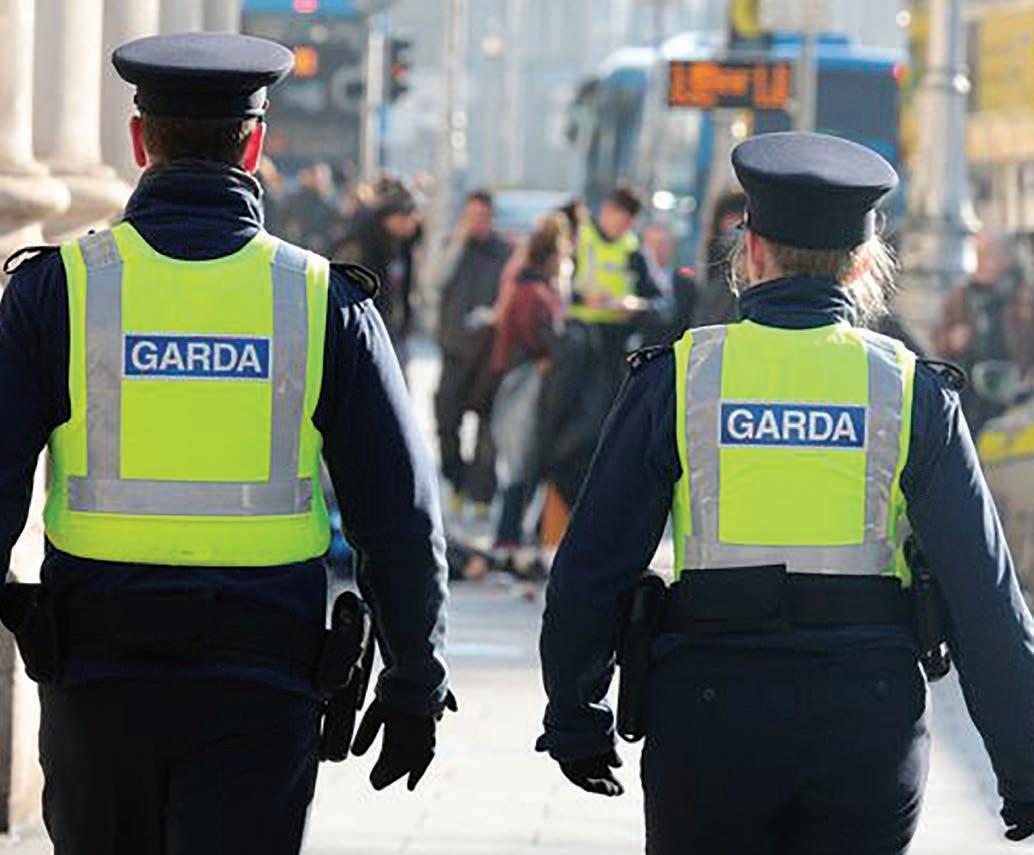
National exhibition puts Kilkenny in its Place
ON New Year’s Day the annual exhibition of watercolours by Turner opened onsite and online at the National Gallery of Ireland.‘Turner & Place: Landscapes in Light and Detail’ was cancelled in 2021 when the gallery closed, due to Covid-19, following Government advice. is year, a group of 19 rare Irish topographical drawings by Francis Place (1647–1728), who visited Ireland in 1698, will join the Gallery’s exquisite collection of 31 light- lled watercolours by Joseph Mallord William Turner (1775–1851). e year 2022 is the 50th anniversary of the gallery’s acquisition of Place’s works – on display in full for the rst time since 1972 – which includes an early view of Kilkenny –adepiction ofKilkenny Castle and City from Wind Gap Hill– as well as scenes from Drogheda, Waterford, Dublin and Kildare. A virtual exhibition will be available online for visitors who would like to explore the show from home.
Niamh MacNally, curator of the exhibition, said:‘“ e jewel-like colours and experimental e ects in Turner’s luminous watercolours are captivating, while the precise detailing in Place’s prospects, encourages close inspection, with the aim of identifying what has changed, or indeed stayed the same, over time. Turner’s atmospheric watercolours can envelop the viewer, whereas Place’s carefully observed landscape studies contribute signi cantly to the topographical history of the cities and towns he depicted in the nal years of the seventeenth century.”
In 1900, the National Gallery of Ireland received a bequest of 31 watercolours and drawings by J. M. W. Turner from the English collector Henry Vaughan (1809–99). Vaughan stipulated in his will that the watercolours be exhibited every year, free of charge, for the month of January, when the light is at its weakest.
Since 1901, the gallery has displayed the watercolours for the month of January, thereby upholding the conditions of his bequest. January 2022 marks 121 years since the Turner watercolours were rst exhibited at the Gallery.
Place’s views are the earliest known depictions of Drogheda, Dublin, Kilkenny, and Waterford within the national collection. is ne collection of early drawings, o ering a glimpse of late seventeenthcentury Ireland, was purchased exactly 50 years ago through the Gallery’s Shaw Fund. e January 2022 display provides the Gallery with an opportunity to highlight these two important collections of works on paper, both of which came into the Gallery by way of generous benefaction. It is the rst time since 1972 that the rare Place drawings will be displayed to the public as a group.
‘Turner & Place:Landscapes in Light and Detail’is on view until the end of the month. e exhibition showcases the work of two prominent English artists, working centuries apart, who viewed the landscape at rst hand, albeit with radically di erent results. e exhibition also highlights the importance of two key benefactors (Vaughan and Shaw), both of whom made lasting contributions to the Gallery.
A programme of online learning events to complement the exhibition will include a free curator’s talk, an Irish language conversation event, a talk byDr Helen Pierce, art historian on the work of Francis Place, and a series of online painting classes with artist Niall Naessens.
Find out more atwww.nationalgallery.ie.
